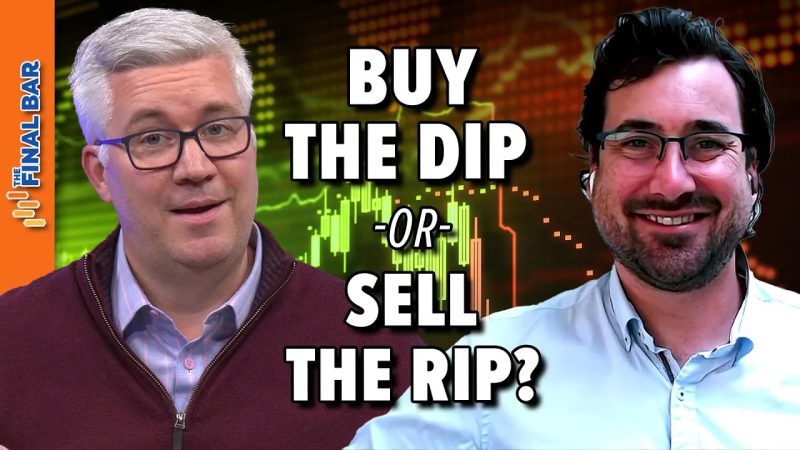In the world of investing, it’s common to hear the phrases buy the dip and sell the rip. These concepts are based on the idea of market timing – determining the best moments to enter or exit a trade for maximum profit. While these strategies may sound straightforward, the decision of when to buy or sell can be complex and nuanced. Let’s delve deeper into the concepts of buying the dip and selling the rip to understand how they work and the key considerations that investors should keep in mind.
Buying the Dip:
Buying the dip refers to the practice of purchasing an asset when its price experiences a temporary decline or pullback. The rationale behind this strategy is to take advantage of lower prices and potentially benefit from the subsequent recovery or uptrend in the asset’s value. However, deciding when to buy the dip requires careful analysis and consideration.
One important factor to consider when buying the dip is the underlying fundamentals of the asset. Is the price decline driven by temporary market volatility or a fundamental shift in the asset’s value? Conducting thorough research and analysis can help investors determine whether the price drop presents a buying opportunity or if there are underlying reasons that may warrant caution.
Another key consideration when buying the dip is market sentiment. Investor psychology plays a significant role in price movements, and buying when fear and panic are driving prices down can often lead to attractive entry points. However, investors should be cautious of catching a falling knife – just because an asset’s price is down doesn’t guarantee an immediate rebound.
Additionally, risk management is crucial when buying the dip. Setting stop-loss orders and defining exit points can help investors limit potential losses in case the price continues to decline after their purchase. The goal is to balance the potential for profit with the need to protect capital in case the trade goes against expectations.
Selling the Rip:
Conversely, selling the rip involves selling an asset when its price experiences a sharp increase or rally. This strategy aims to capitalize on short-term price spikes and lock in profits before a potential reversal occurs. However, determining when to sell the rip requires careful monitoring and analysis.
One important consideration when selling the rip is assessing the sustainability of the price increase. Have external factors driven the price higher, or is it simply a result of market speculation or hype? Understanding the drivers behind the rally can help investors make informed decisions about when to exit their positions.
Timing is crucial when selling the rip, as price momentum can be fleeting. Setting profit targets and having a clear exit strategy can help investors avoid greed-driven decisions and secure realized gains. Emotions should be kept in check, and decisions should be based on logic and analysis rather than fear of missing out on further gains.
Lastly, investors should consider the broader market environment when selling the rip. Are there signs of potential market reversals or corrections on the horizon? Monitoring macroeconomic indicators and market sentiment can provide valuable insights into when it may be prudent to take profits and reevaluate investment strategies.
In conclusion, the concepts of buying the dip and selling the rip are popular strategies used by investors to capitalize on market movements. While these approaches can be effective when executed thoughtfully and with careful consideration of key factors, they also come with inherent risks. Investors should conduct thorough research, manage risks effectively, and remain disciplined in their decision-making to increase the likelihood of success when implementing these strategies.


























